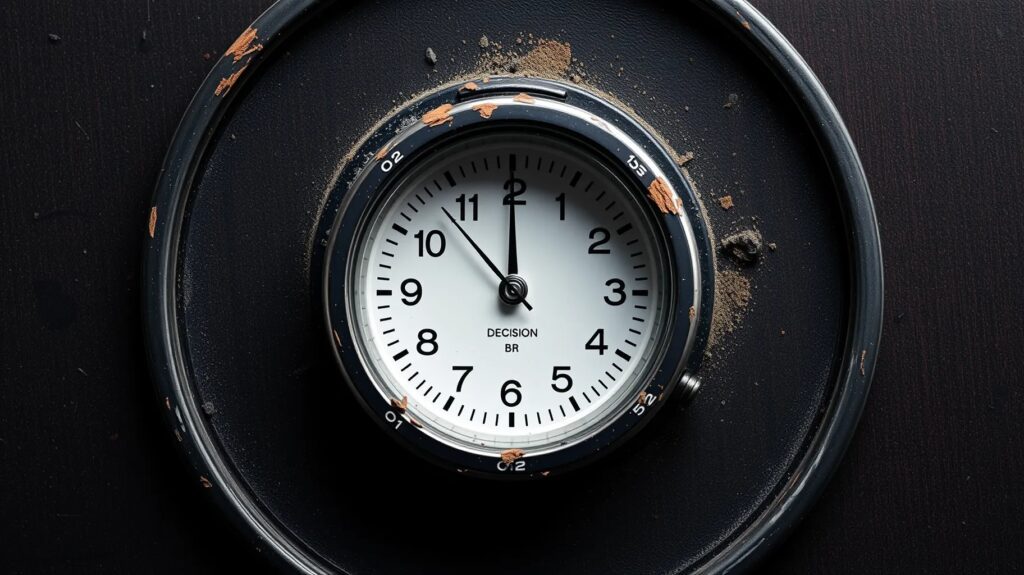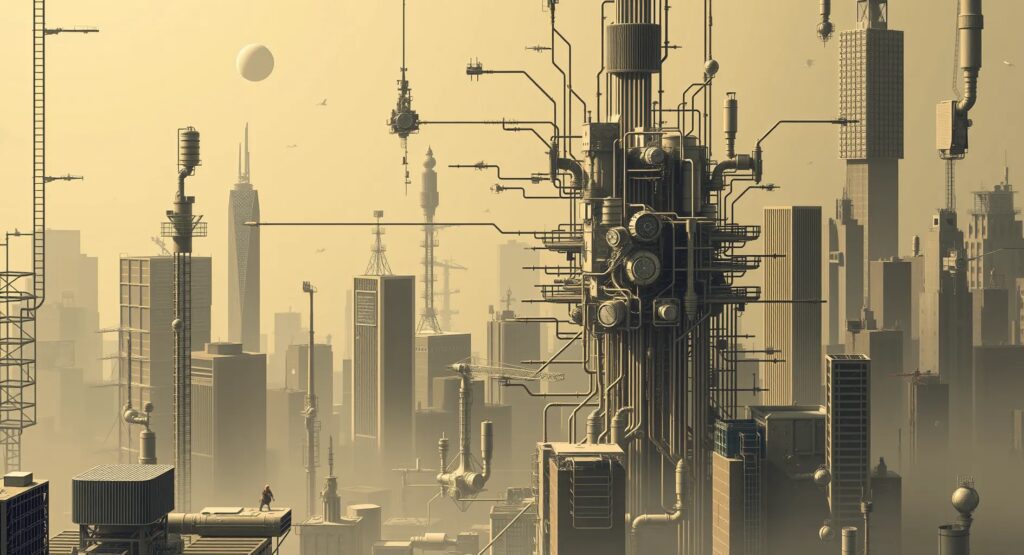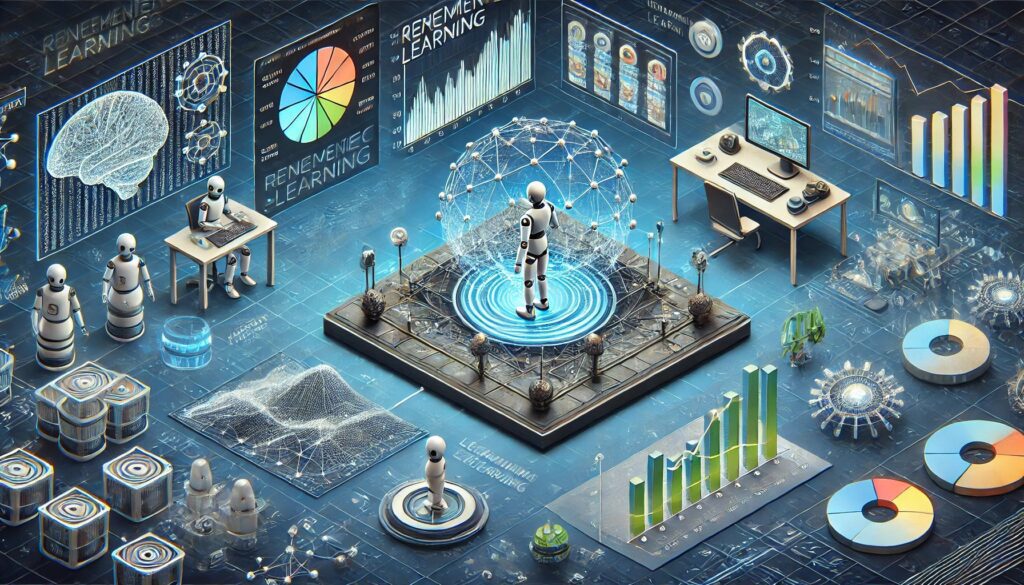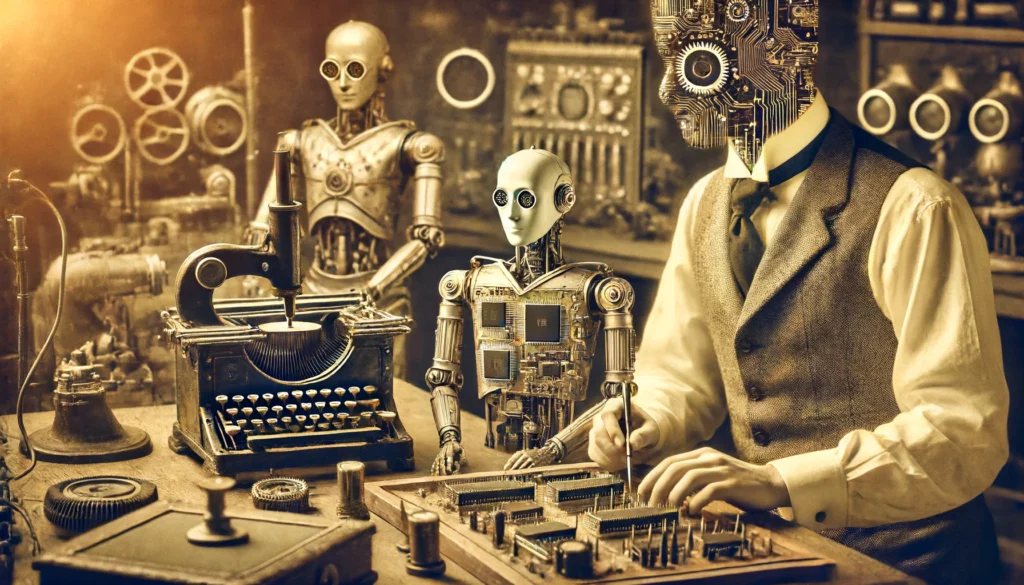
What is MaxDiff RL and Why Does It Matter?
Artificial intelligence has made leaps in recent years, but when it comes to creativity, there’s still a long road ahead. This is where MaxDiff RL—short for Maximum Difference Reinforcement Learning—enters the conversation. But before diving deep, let’s back up a little. Reinforcement Learning (RL) in AI is like teaching a robot through trial and error, much like how we teach a child to ride a bike. MaxDiff RL pushes this concept further, focusing on making decisions by exploring the most distinctive contrasts between options.
But why does MaxDiff RL matter? It introduces an interesting twist in AI decision-making. Rather than just repeating logical sequences to solve problems, it leans into the potential for intuitive decision-making. This could unlock more human-like qualities in AI systems, including, just maybe, creativity.
The Rise of Intuition in Machine Learning
We often think of AI as cold, calculated, and purely logical. Machines excel at doing math, following instructions, and making decisions based on sheer data. But what they’ve lacked is that magical gut feeling—intuition. The kind of spark that helps people, sometimes without a solid reason, know when they’re onto something big.
The idea of intuition in AI is catching fire. With MaxDiff RL, AI could become better at making those leaps between unrelated ideas, just as humans do when they’re brainstorming or creating. Imagine AI not just crunching numbers but having a flash of inspiration like an artist or a scientist. The potential here is huge.
How Does MaxDiff RL Work in Practice?
Now, the nitty-gritty. How does MaxDiff RL function? In basic terms, it works by comparing multiple choices and identifying the most significant differences between them. Instead of honing in on just the ‘right’ answer, MaxDiff explores a wide range of possibilities and selects the one that stands out the most.
Think of it like this: if you’re deciding on the best painting in an art gallery, rather than looking for perfection, you might ask yourself which one surprises you the most. It’s this way of thinking that could push AI toward a kind of creativity. By encouraging machines to embrace contrasts and outliers, they might just come up with something we’d call inventive.
Intuition vs. Logic: The Human-Like Learning in AI
Humans don’t always rely on cold, hard logic. Some of our best decisions come from gut feelings, sudden flashes of insight, or what we like to call a eureka moment. This is the domain where intuition reigns. Logic tells us two plus two equals four, but intuition nudges us to see connections we can’t immediately explain.
When it comes to AI, traditionally, it has been all about following strict rules, with no room for those fuzzy leaps of intuition. But MaxDiff RL could open a door here. By prioritizing decision-making based on the most striking contrasts, it pushes machines to explore creative pathways rather than just logical sequences.
Could Robots Ever Truly Be Creative?
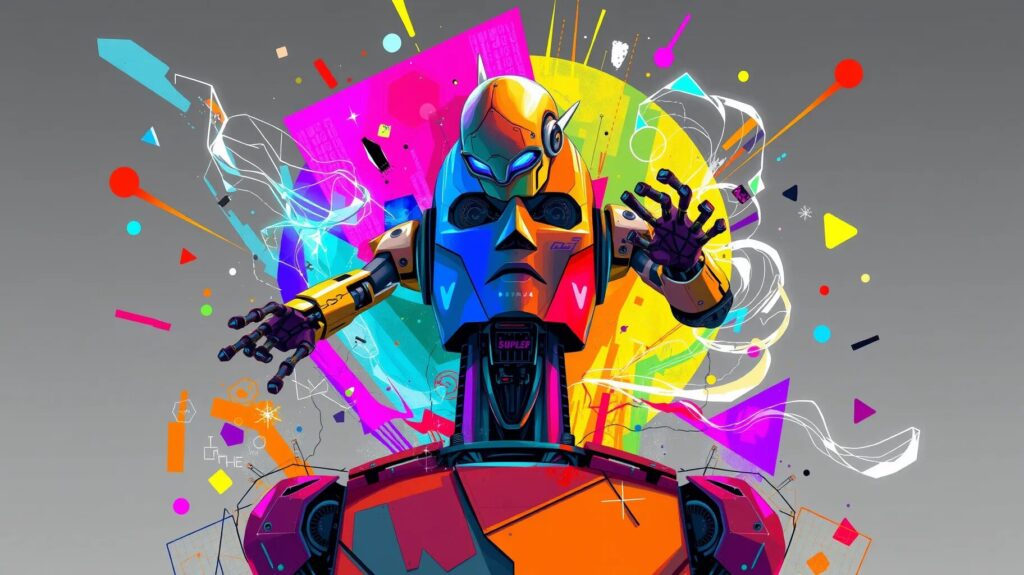
Here’s the million-dollar question: will AI, through techniques like MaxDiff RL, ever reach true creativity? It’s important to remember that creativity is not just about random ideas. It’s about innovation, combining elements in ways that are new, useful, and, most importantly, meaningful.
Some skeptics argue that no matter how advanced AI becomes, it will never truly feel creativity the way humans do. After all, creativity isn’t just a process—it’s deeply tied to emotions, culture, and personal experiences. But with AI systems like MaxDiff RL, machines could at least mimic some aspects of creativity, making decisions that feel original and innovative to us.
The Role of Reinforcement Learning in AI Development
To understand the impact of MaxDiff RL, we must look at how Reinforcement Learning (RL) shapes AI systems. In simple terms, RL is a learning method where AI agents are rewarded for making the right decisions. Just like a dog might get a treat for sitting on command, an AI system gets ‘points’ for achieving a desired outcome.
MaxDiff RL builds on this foundation, but instead of simply rewarding the most logical or efficient action, it also values the most distinctive choices. This means the AI doesn’t just look for the fastest or easiest way to solve a problem—it learns to weigh different options, pushing it toward more varied and possibly creative outcomes.
Current Limitations of Creativity in Artificial Intelligence
While the prospect of creativity in AI is fascinating, there’s still a lot of ground to cover. One of the main limitations of AI in this space is its lack of true emotional understanding. Creativity is often driven by human emotions—joy, frustration, love, or even curiosity. Machines don’t experience these emotions, and this lack can make it difficult for them to grasp the deeper meaning behind creative works.
Another roadblock is that AI tends to follow patterns, even with MaxDiff RL in place. While it might explore new possibilities, there’s still a tendency for machines to fall back on what they’ve been trained to know. In short, AI is still bound by the data it’s fed, and true out-of-the-box thinking remains elusive for now.
MaxDiff RL: A Key to Unlocking New Possibilities?
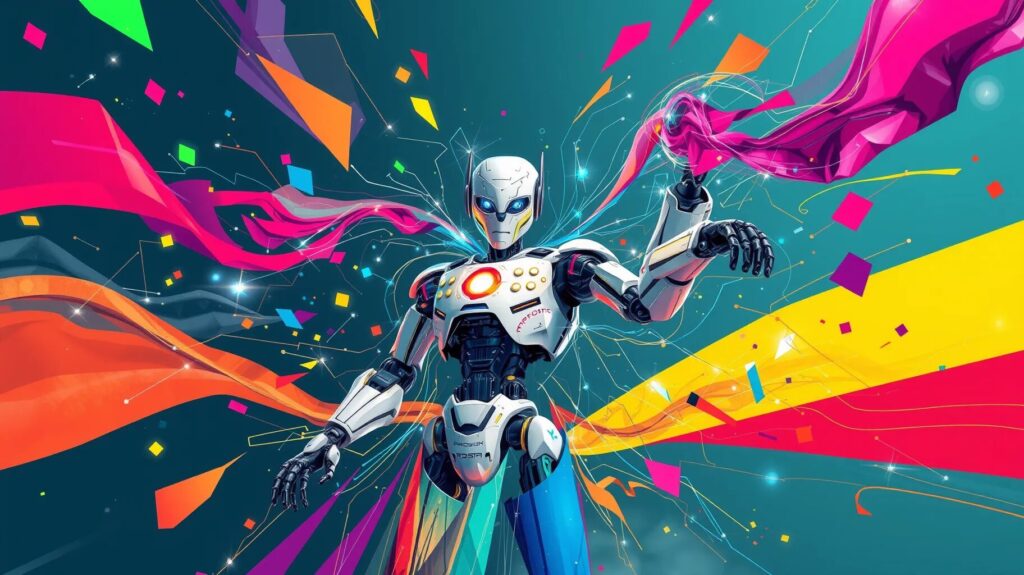
So, could MaxDiff RL be the missing link that unlocks creative potential in AI? There’s no doubt that this approach adds a new layer of complexity to machine learning. By encouraging AI to explore contrasts and unexpected solutions, MaxDiff RL could help machines become less predictable and more imaginative.
We’re already seeing AI systems that generate art, compose music, and even write poetry. But these are mostly based on pre-existing patterns and data. MaxDiff RL might enable AI to break free from these limitations, sparking fresh ideas that don’t rely so heavily on past knowledge.
From Problem-Solvers to Innovators: The Future of AI
Currently, AI excels at solving problems—whether it’s optimizing routes for delivery trucks or diagnosing diseases. But with the introduction of intuition-based learning, we may see AI evolve from mere problem-solvers to true innovators.
Real-World Applications of MaxDiff RL and Creativity
The idea of robots being creative might seem like something from a sci-fi movie, but real-world applications are already emerging. Consider how AI can aid in product design—crafting new models, or even suggesting fresh approaches to classic challenges. By using MaxDiff RL, AI could explore more unconventional options, helping designers break away from traditional molds. It’s not hard to imagine a future where companies turn to AI not just for efficiency but for originality.
In the music industry, AI-powered tools already assist with composing melodies or creating beats. What if MaxDiff RL allowed these systems to push the boundaries further—crafting entirely new genres or blending different sounds in ways that no human has considered yet? Similarly, in architecture, robots could develop buildings that are not only functional but artistically groundbreaking. The potential here is enormous, with AI moving beyond basic assistance to being a full-on collaborator in the creative process.
Can AI Truly Understand Human Creativity?
One of the trickiest parts about AI creativity is that it’s not based on any lived experience or emotional understanding. A robot doesn’t feel inspired by a sunset, nor does it experience heartbreak, joy, or nostalgia—the very things that often fuel human creativity. So, can AI ever truly understand what it means to create something that resonates on a deep, emotional level?
At its core, AI creativity remains somewhat surface-level, driven by patterns, data, and pre-programmed objectives. Even with advanced learning systems like MaxDiff RL, AI lacks the emotional depth that often drives human artistic expression. That said, it could still simulate creativity in ways that produce surprising and innovative results. The question remains: will we, as humans, consider these results genuinely creative if they lack emotional roots?
Ethical Considerations of Creative Machines
As we move closer to developing machines that can think and act creatively, we also have to address the ethical implications of such advancements. If AI becomes capable of generating original works—whether art, music, or even inventions—who owns the result? Can we attribute creativity to a machine that merely mimics human intuition? Furthermore, if robots begin to outperform humans in creative fields, will that erode the value we place on human-made work?
Additionally, there’s the concern of AI taking over jobs that require creative skills. Many industries, from advertising to entertainment, rely on human ingenuity. As AI systems like those powered by MaxDiff RL grow more advanced, there’s a fear that machines could outshine humans, leading to job displacement or even a devaluation of human creativity itself.
Human-AI Collaboration: The Creativity Duo?
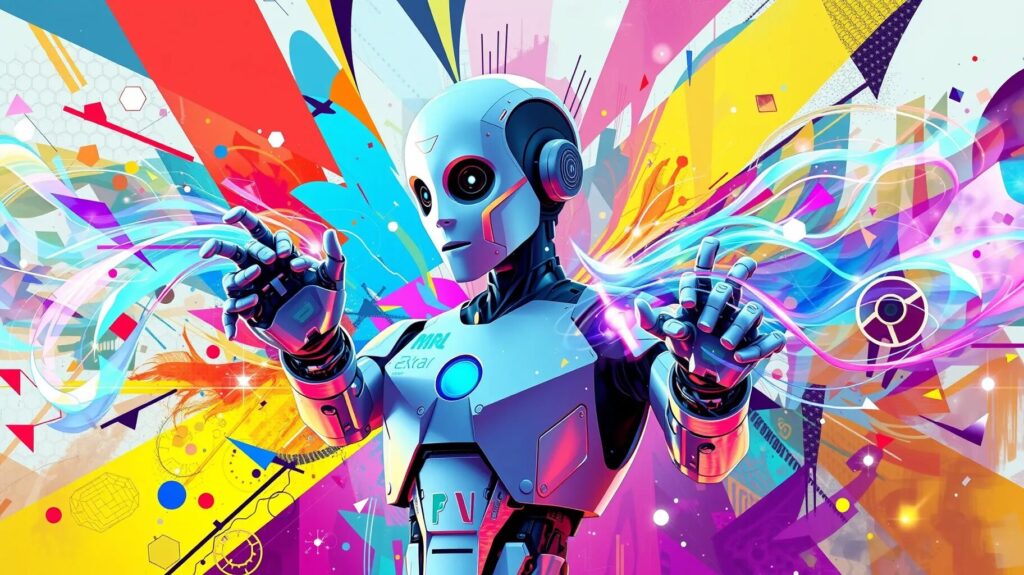
Rather than viewing AI as a competitor, it might be more productive to see it as a partner in the creative process. Imagine writers working alongside AI to brainstorm unique ideas for a novel, or visual artists using AI to help generate unexpected shapes and forms. In such cases, human intuition and emotion combine with AI’s boundless processing power, creating a synergistic relationship that could result in even greater creative breakthroughs.
AI can act as an assistant in areas where human creativity might be limited—helping with tasks like pattern recognition or testing the feasibility of bold ideas. MaxDiff RL could push this partnership even further by allowing AI to suggest options that challenge human creators, forcing them to think outside their own biases and routines. The real magic could lie in this collaboration, where human and machine come together to produce something truly innovative.
What the Future Holds for AI, Creativity, and MaxDiff RL
The potential for MaxDiff RL to revolutionize creativity in AI is still unfolding. While today’s AI systems are already impressive, they’re still limited by their reliance on data and logic. However, as MaxDiff RL becomes more integrated into AI frameworks, we could see robots and AI systems that make more intuitive, human-like decisions—leading to creative outputs that are more surprising and inventive than we’ve ever seen.
Looking ahead, it’s possible that AI creativity will be redefined, shifting from something that feels like a replication of human efforts to something entirely new. Machines may come up with ideas that challenge our traditional notions of creativity, producing results that are valuable in ways we can’t yet foresee.
Could Intuition-Based AI Surpass Human Innovation?
Here’s a wild thought: could AI, powered by intuition-based learning, actually surpass human creativity? We’re already seeing AI compose music, write stories, and generate artwork, but with systems like MaxDiff RL, robots might eventually move past mere imitation and start creating things that go beyond human imagination.
It’s possible that AI could take risks and combine ideas in ways that no human ever would. Because machines don’t rely on emotional biases or preconceptions, they could generate truly innovative concepts that feel alien to us—yet brilliant. We might one day see robots come up with inventions or art forms that no human brain could have conceived on its own.
The Challenges of Teaching Creativity to Robots
Teaching a machine to be creative comes with a unique set of challenges. Creativity, after all, isn’t something you can just program—it’s a messy, often chaotic process that involves trial, error, and even failure. One of the main hurdles in developing creative AI lies in teaching machines to embrace this unpredictability. How do you teach a machine to “think outside the box” when it’s wired to find patterns and follow rules?
That’s where MaxDiff RL shows promise. By prioritizing the exploration of differences between ideas, rather than just the most logical path, this approach encourages AI to try the unexpected. However, there’s still the issue of judgment—how can a robot know when it’s hit on something truly creative or revolutionary? And will AI ever develop a sense of taste or style, or is it destined to rely on human feedback for validation?
Final Thoughts: Will MaxDiff RL Revolutionize AI?
As we push the boundaries of artificial intelligence, the question of whether AI can be truly creative becomes ever more intriguing. Techniques like MaxDiff RL offer a tantalizing glimpse of what’s possible—giving machines the ability to make intuitive leaps and explore a broader range of possibilities. While we’re not quite there yet, the future holds incredible potential for AI to move from predictable problem-solvers to true creators in their own right. The road to teaching creativity to robots may be long and winding, but with innovations like MaxDiff RL, we’re taking a bold step forward. Will machines one day outpace us creatively? Only time will tell. But one thing’s for sure: the journey will be as fascinating as the destination.
FAQ’s
What is MaxDiff RL?
MaxDiff RL stands for Maximum Difference Reinforcement Learning. It’s a type of machine learning algorithm that focuses on identifying and exploring the most distinctive differences between choices rather than just selecting the optimal solution. This method encourages AI to make decisions that stand out, which could push it towards more creative outcomes.
How does MaxDiff RL differ from traditional reinforcement learning?
Traditional reinforcement learning (RL) rewards AI systems for actions that result in a desired outcome, often following a strict logical path. MaxDiff RL expands this by encouraging the AI to explore diverse and contrasting options, even if they aren’t immediately logical. This wider exploration increases the chance for more innovative or unexpected results.
Can MaxDiff RL make AI creative?
While MaxDiff RL opens the door to more human-like decision-making, it doesn’t automatically make AI creative in the emotional or imaginative sense humans experience. However, it does allow AI to behave in ways that seem more creative by exploring diverse solutions and patterns, potentially generating novel ideas or designs.
What’s the difference between AI intuition and human creativity?
Human creativity is deeply tied to emotion, experience, and personal context. It’s often unpredictable and spontaneous. AI intuition, on the other hand, refers to decision-making processes that allow machines to make leaps in logic without directly following a rule-based pattern. While AI can mimic creative behaviors, it doesn’t experience creativity in the same emotional or subjective way humans do.
What are some real-world applications of MaxDiff RL and AI creativity?
AI systems powered by MaxDiff RL could revolutionize industries like:
- Product design: Helping engineers explore unconventional designs.
- Music composition: Generating new musical genres or blending unexpected sounds.
- Architecture: Creating innovative building designs that push artistic boundaries.
- Marketing: Helping brainstorm and refine novel advertising concepts.
Will AI replace human creatives like artists or writers?
AI can complement human creativity, especially in repetitive or exploratory tasks, but it’s unlikely to fully replace human artists, writers, or designers anytime soon. AI-generated content lacks the emotional depth and personal experience that often drives human creativity. However, AI could assist or inspire humans in their creative process.
Can AI truly understand or appreciate human creativity?
No. While AI can generate creative outputs by analyzing data patterns and following certain rules, it doesn’t have the capacity to understand or appreciate the emotional or cultural significance behind human creativity. AI can mimic creativity, but it lacks the lived experience that fuels true creative expression.
Are there any ethical concerns surrounding creative AI?
Yes, several ethical concerns arise as AI becomes more involved in creative fields. These include:
- Ownership: Who owns the output of an AI system? Is it the person who programmed the AI, or the AI itself?
- Job displacement: If AI becomes increasingly creative, could it replace jobs traditionally held by human artists, musicians, and designers?
- Authenticity: As AI produces creative work, will it devalue human-made creations or alter our perception of what is considered “authentic” art?
Can AI creativity surpass human innovation?
There’s potential for AI creativity to surpass human innovation in certain ways. AI, especially when powered by methods like MaxDiff RL, could generate combinations of ideas or solutions that are beyond what humans might naturally consider. However, true human innovation is often driven by emotional, cultural, and experiential factors that AI currently cannot replicate.
How does MaxDiff RL benefit industries beyond the arts?
Beyond artistic fields, MaxDiff RL can be applied to industries like:
- Healthcare: Generating innovative treatment strategies or drug combinations.
- Engineering: Optimizing designs or processes by exploring unconventional solutions.
- Education: Creating personalized learning plans that adapt to diverse student needs.
- Finance: Offering unique investment strategies by analyzing less obvious market differences.
Will AI with MaxDiff RL require less human input?
While AI using MaxDiff RL could become more autonomous in generating novel solutions, human oversight will still be necessary. AI can offer creative ideas, but humans are essential in guiding, evaluating, and refining these suggestions to ensure they are practical, ethical, and aligned with specific goals.
What challenges exist in teaching AI to be creative?
Some key challenges include:
- Lack of emotional understanding: AI doesn’t experience emotions, which are often a key driver of human creativity.
- Pattern dependence: AI systems, even with MaxDiff RL, rely on past data to make decisions, which limits their ability to generate truly original ideas.
- Judgment: AI struggles with subjective judgment—knowing when an idea is creative, innovative, or valuable without human input remains difficult.
How soon will AI become truly creative?
We’re still some distance away from AI achieving genuine creativity in the way humans experience it. However, methods like MaxDiff RL could lead to AI systems that mimic creative processes in more sophisticated and human-like ways in the near future. In fields like music composition, art generation, and design, we’re already seeing AI produce impressive results, but we’ve only scratched the surface.
Can MaxDiff RL help AI develop a ‘style’ or ‘taste’?
It’s unlikely that MaxDiff RL will help AI develop a consistent style or taste in the way humans do. While it might generate novel combinations or solutions, AI creativity remains largely driven by randomness or data-driven exploration rather than personal preferences or cultural insights. Humans would still need to refine and give feedback to shape AI outputs in line with specific tastes.
How can humans and AI collaborate in creative fields?
AI can serve as a creative assistant, helping humans by:
- Generating ideas: Offering unexpected combinations or concepts.
- Streamlining tasks: Handling repetitive or time-consuming creative tasks, such as color correction or background music composition.
- Enhancing creativity: Encouraging humans to think beyond their usual boundaries by suggesting unconventional approaches that might be overlooked.
Is AI creativity purely random or can it be directed?
While AI’s creative processes often seem random, they can be directed through parameters set by programmers. MaxDiff RL allows AI to explore a wider range of options, but it doesn’t operate in total randomness. Instead, it strategically identifies and explores distinctive differences, which can lead to more deliberate creative outcomes.
Resources
1. MaxDiff RL: An Overview
- Link: MaxDiff Reinforcement Learning
A comprehensive introduction to MaxDiff RL, its mechanisms, and potential applications in AI. Useful for beginners looking to understand the basics of this learning model.

